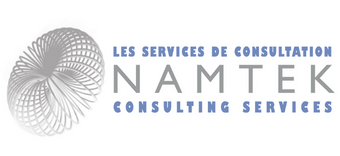 It’s already nearing the end of 2016. Crazy how fast time flies! For many people, this time is the busiest, filled with corporate events, family gatherings, holiday shopping, vacations and more. For many businesses, especially in the retail industry, it’s also one of their busiest times of the year. However, there are those industries or companies where December is a quiet month, making it the perfect time to look ahead and plan for the upcoming year. It’s when executives can finally set aside a few hours or days to establish and finalize next year’s budgets, prioritize upcoming projects, assess employee performance and review goals and benchmarks for the following year. What our consultants always encourage is to also set some time aside to review business processes and determine which ones aren’t working well anymore. For example, are you noticing an increase in unhappy customers, an increase in manual data entry, duplicated work, an increase in costs, missed deadlines, frustrated, and unproductive employees…? If so, it’s definitely time to improve the processes that don’t work and are leading to these problems.
It’s already nearing the end of 2016. Crazy how fast time flies! For many people, this time is the busiest, filled with corporate events, family gatherings, holiday shopping, vacations and more. For many businesses, especially in the retail industry, it’s also one of their busiest times of the year. However, there are those industries or companies where December is a quiet month, making it the perfect time to look ahead and plan for the upcoming year. It’s when executives can finally set aside a few hours or days to establish and finalize next year’s budgets, prioritize upcoming projects, assess employee performance and review goals and benchmarks for the following year. What our consultants always encourage is to also set some time aside to review business processes and determine which ones aren’t working well anymore. For example, are you noticing an increase in unhappy customers, an increase in manual data entry, duplicated work, an increase in costs, missed deadlines, frustrated, and unproductive employees…? If so, it’s definitely time to improve the processes that don’t work and are leading to these problems.
In today’s world, things can change in an instant. Therefore, your business processes may have been efficient 5 years ago (or even one year ago!), but today, they are considered inefficient or outdated due to new technology, new goals, industry or consumer changes, etc.
So what can you do about it?
We’ve compiled an End-of-Year Checklist for you so that you can overcome challenges and improve outdated processes for 2017;
- Write down the main problems/challenges you’ve noticed this past year;
- Where are costs going up? Where are most of the delays occurring? How come customers or suppliers are growing more unhappy? Why are deadlines constantly missed? Why are errors increasing? …
- Analyze these processes. Focus on either one or many of these problem areas and make them your priority for 2017. A great way to really understand what’s going on is to speak directly with the employees who are affected by the processes and get their feedback on why things aren’t working so well anymore. Perhaps they have an idea on how to improve them. It’s critical that you and everyone involved understand exactly what these specific processes are meant to do before addressing the problems and redesigning the processes.
- Restructure those inefficient processes; brainstorm with your team and jot down all the ideas to solve these problems. Many companies refer to a consultant during this step, to help them find possible risks and points of failure of each possible solution.
- The next step involves securing the resources required to implement change (change = new processes or process alterations required to improve efficiency & solve current challenges/issues). Do you need to hire someone new? Do you need to implement new software applications or outsource an IT provider for their services? Whatever it may be, now’s the time to set the budget (make sure it’s a realistic budget!).
For example, let’s say you realized that costs rose with the increase in incoming purchase orders in 2016. Perhaps this was due to hiring more sales reps to input all of these orders into the management system. Now you have more salaries, more manual data entry, and in turn more errors (human errors are likely to occur with data entry). With more errors in customer orders, there are more unsatisfied customers. What is a possible solution to this problem? Reduce the manual data entry or human intervention when it comes to incoming purchase orders through the use of an automated and integrated Electronic Data Interchange (EDI) service. With EDI, incoming Purchase Orders (POs) can be integrated directly into your management system. No human intervention required! This then reduces errors, plus improves the speed in which orders are processed and delivered to customers. A new budget will then be required for 2017 for an EDI integration project.
Going through the above checklist before the New Year will allow you to see real improvements next year. Now’s the time to ensure that your processes are effective and streamlined, your employees are productive, happy and properly trained, customers are satisfied and the technologies used are up-to-date, simple and a good fit for your business. We find too many businesses with complex software solutions, at which point their executives then wonder why their processes are so complex. By 2017, companies will look to have more affordable, flexible and simple solutions in order to have more agility for change. Set your plan and realistic budgets in order to benefit from efficient, streamlined processes.




